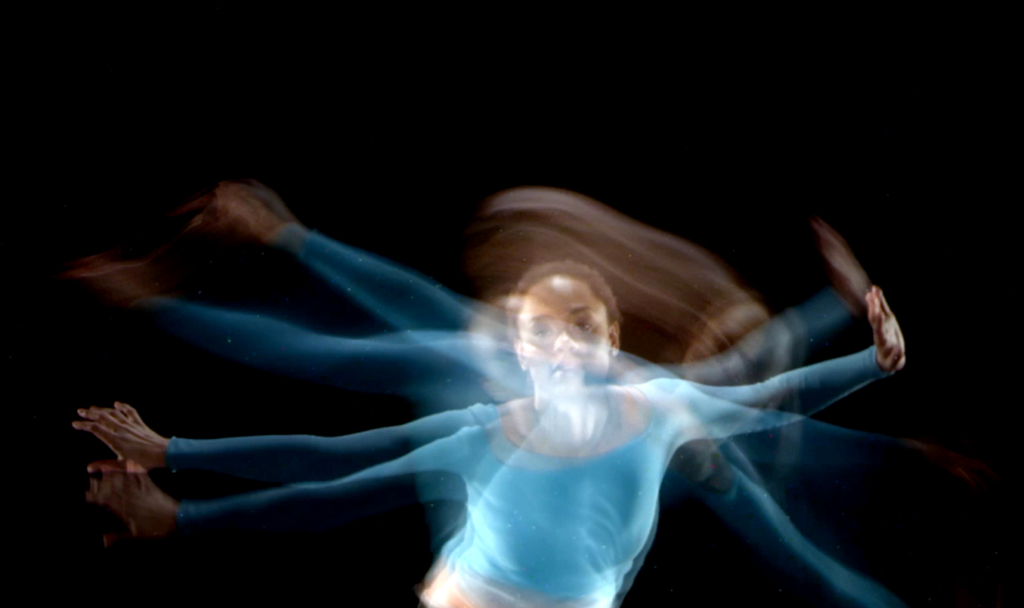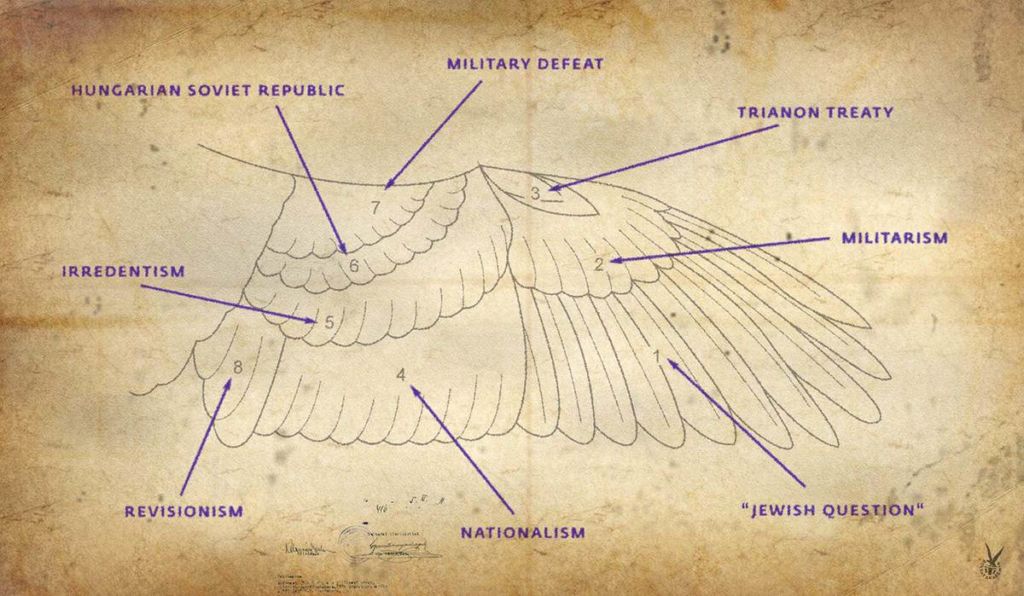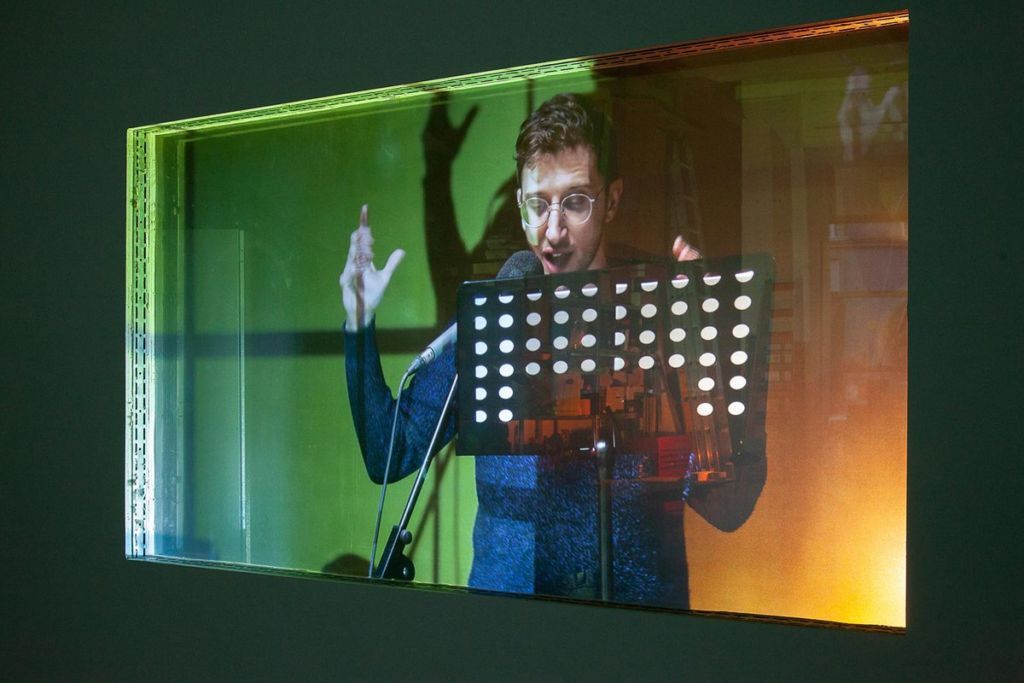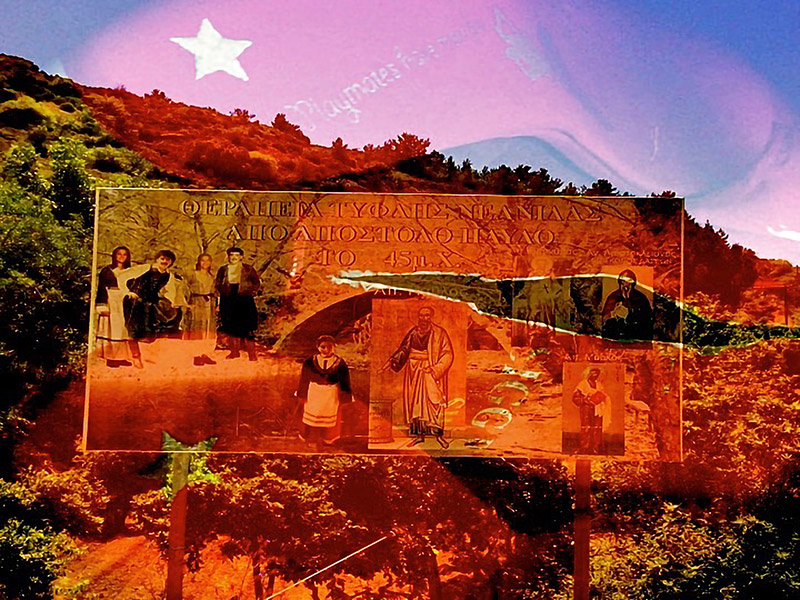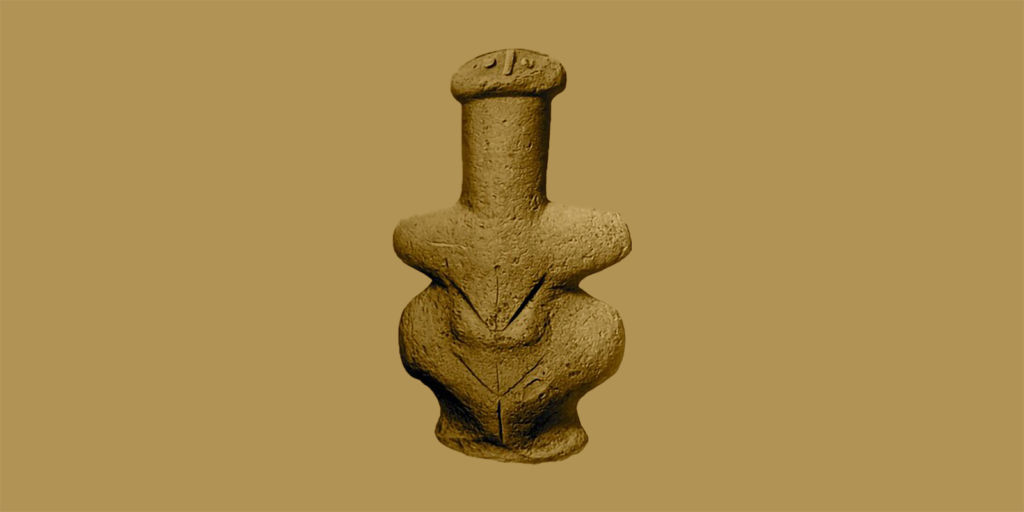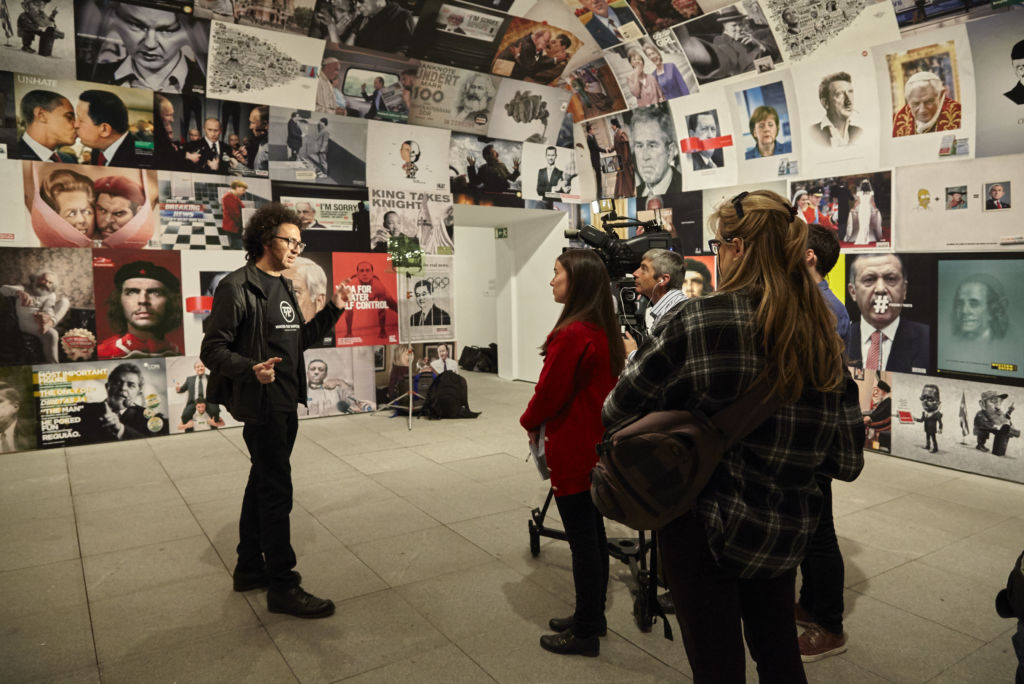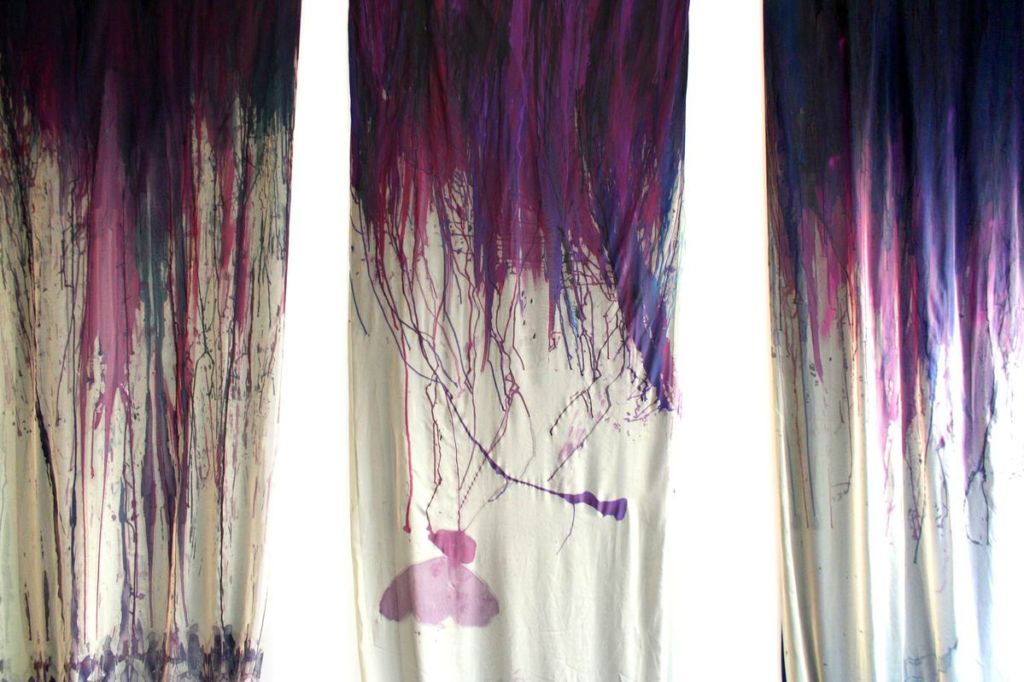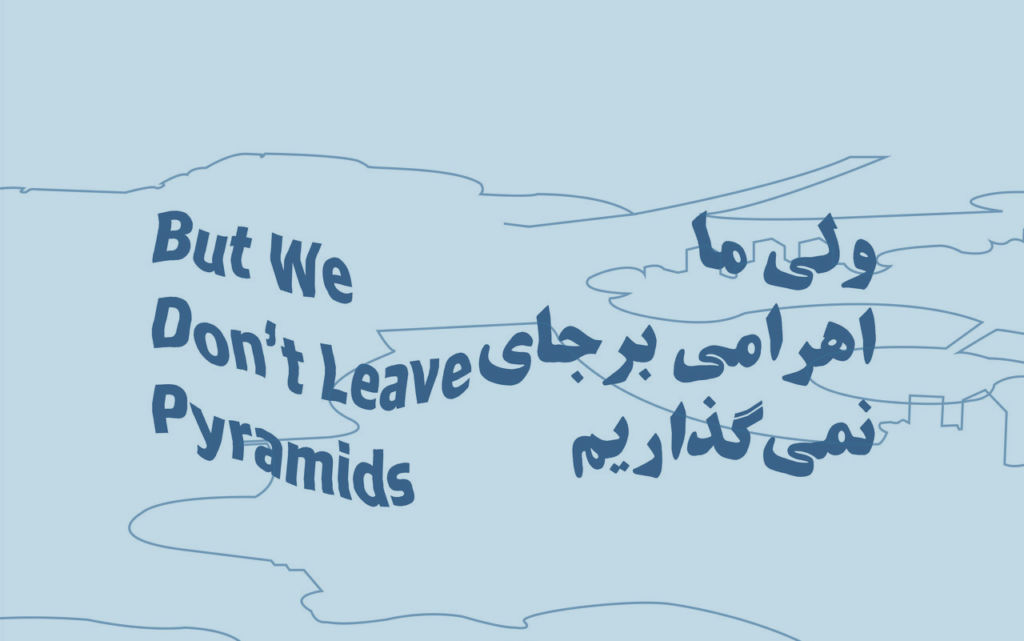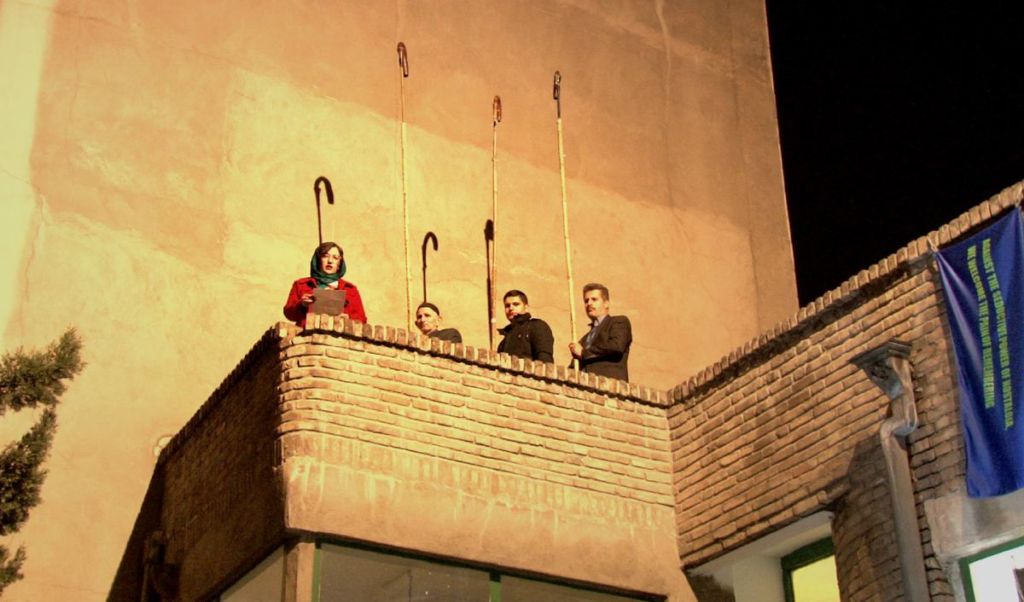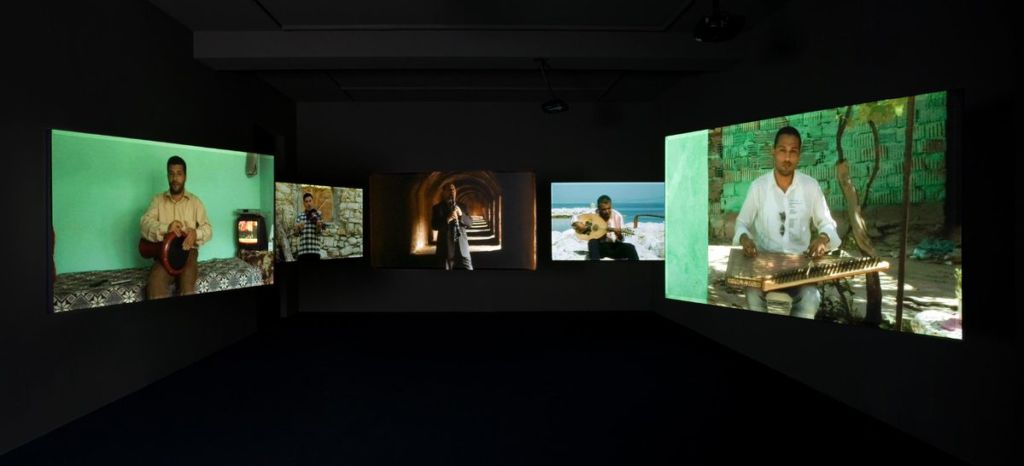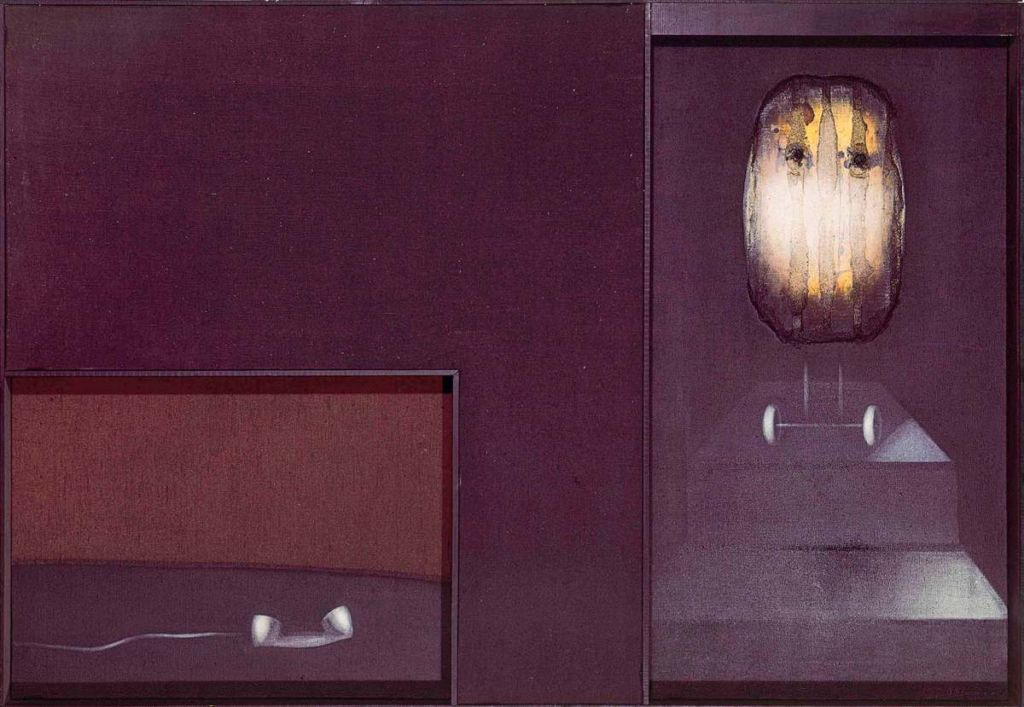We have all been subjected at one time or another to scam messages sent to our inboxes. Some are written by people who pretend to be close friends of political figures, offering large sums of money in exchange for bank transactions. Despite the “too good to be true” nature of these propositions, many people fall prey to them each year. These messages play on our greed, our longing for adventure or exoticism, but also on our post-colonial or simply paternalistic sentiments.
Les rumeurs du monde, Repenser la confiance à l’âge de l’Internet [The Rumors of the World, Rethinking Trust in the Age of the Internet], Sternberg Press / Les presses du réel, Dijon, 2015, 240 p. The publication, directed by Omar Kholeif, (with contributions by Joana Hadjithomas and Khalil Joreige, by curators Eric Mangion, Omar Kholeif, Sarah Perks, Henriette Huldisch, and Laura U. Marks, Nicolas Auray, Franck Leibovici, Jacques Rancière, Finn Brunton, Norman M. Klein, Uzma Rizvi, Rasha Salti), is co-published by Villa Arson (Nice), Home (Manchester) and MIT List Visual Art Center (Cambridge, Boston).It comes after an exhibition by Joana Hadjithomas and Khalil Joreige « Je dois tout d’abord m’excuser… » at Villa Arson in 2014.
They have a very specific writing style, with a familiar mix of awkward wording (the result of using translation-bots) and lyrical digressions. If you look behind the words, you see that they map out a diverse range of recent conflicts and dramas taking place in Africa, the Middle East or Asia. Joana Hadijthomas and Khalil Joreige have been collecting these scams since 1999. They carried out investigations to pinpoint the origin of this spam and the way it operates, leading them to produce several artworks, exhibitions, and a publication1.
Since 1999, we have collected, archived, studied and closely followed more than four thousand undesired emails, called Spam, while focusing on one genre in particular, the Scams, namely those which draw up a likely scenario, in line with current events and unresolved conflicts, to take advantage of the recipient’s trusting nature. Written in the first person and structured as monologues, these emails often assume the identities of known public figures, of the children or spouses of politicians, of dictators who confirm that they are in possession of a large sum of money that requires immediate transfer. A considerable percentage of the said sum is promised to the recipient should he or she be able to help. Also known as “Nigerian scams”, since they are often sent from Nigeria, these fraudulent messages are surprisingly effective: each year, thousands of people are coerced out of several hundred millions of Euros, in some cases pushing people to commit murder or suicide. At first, we held on to these Scams without knowing what to do with them. Then we tried to understand the modes of production and representation of information that went into building them. Do these emails contain a narrative; could we give a body to an imaginary?
A little history
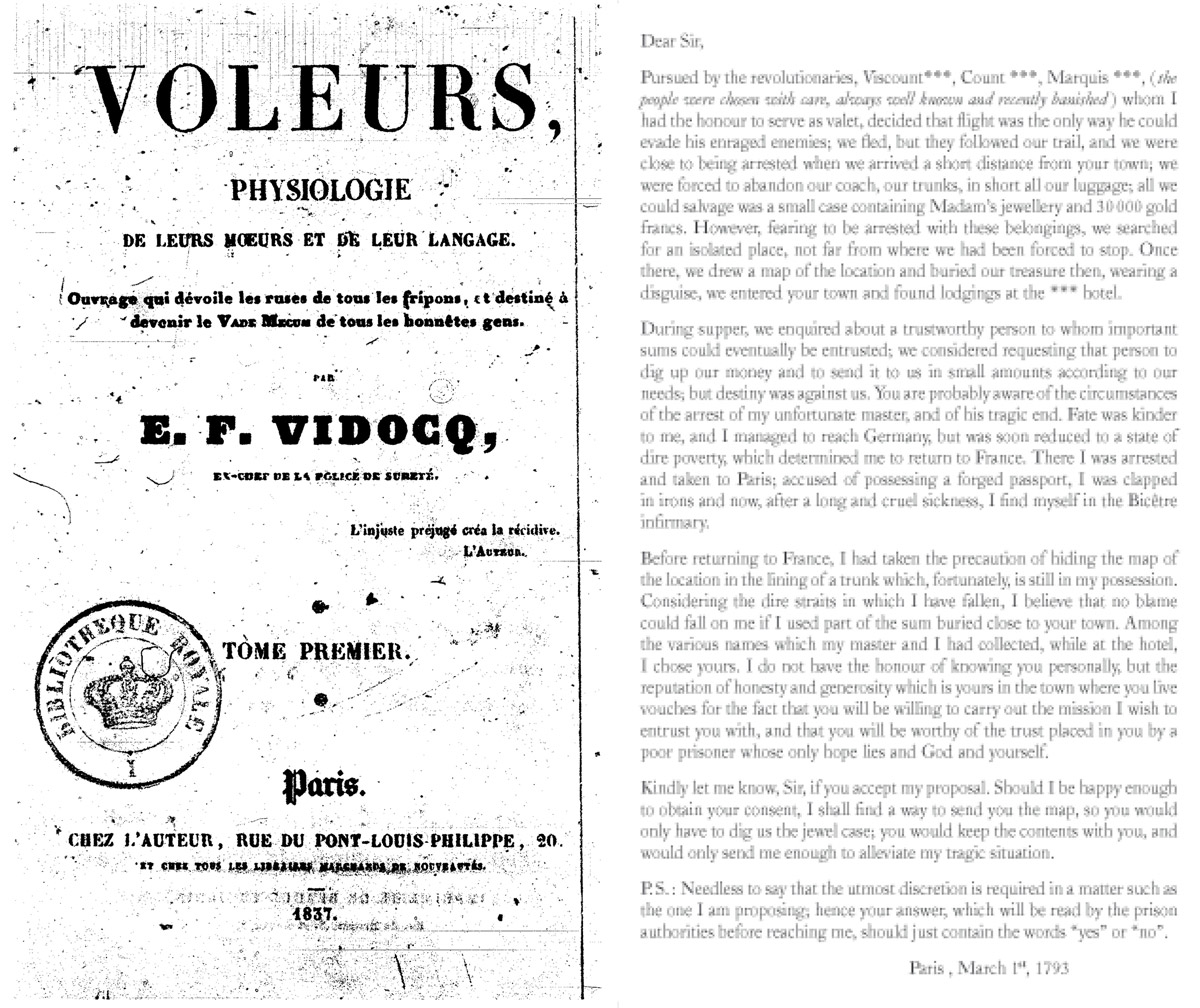
Les Voleurs (1836), Eugène-François Vidoq’s book
Scams are part of a long tradition of similar fraudulent schemes. In sixteenth-century Spain, a confidence trick called the “Spanish Prisoner” appeared; a Spanish princess detained by miscreants would be freed for a sum of money, with the kind donator receiving her hand in marriage. This mechanism was then revised in the late eighteenth century under the name “Jerusalem Letters”. Here the scam consisted of letters written by nobles or their valets imprisoned in Bicêtre prison during the French Revolution. The missives, which offered large rewards in exchange for services, were dropped out of the prison windows into Rue de Jérusalem. What began as a bona fide request for help quickly changed into the trafficking of false letters, similar to today’s Scams: con men took advantage of the situation to create a fantasy about the secret riches of these imprisoned noblemen, money that was potentially accessible to common mortals.
In his book Les Voleurs (1836), Eugène-François Vidoq (Parisian chief of police and himself an ex-swindler) talks about the “Jerusalem Letters”. For him, these schemes appear at particular moments in history and in this specific case, express the support that some of the French still had for the Ancien Régime. From manuscript to email, these fraudulent messages have developed exponentially. Now, in the Internet Age, there is a fine-tuned a system where each person plays a role within an organized group. Today’s Scams are rarely the fruit of individual initiative.
Greed and beliefs
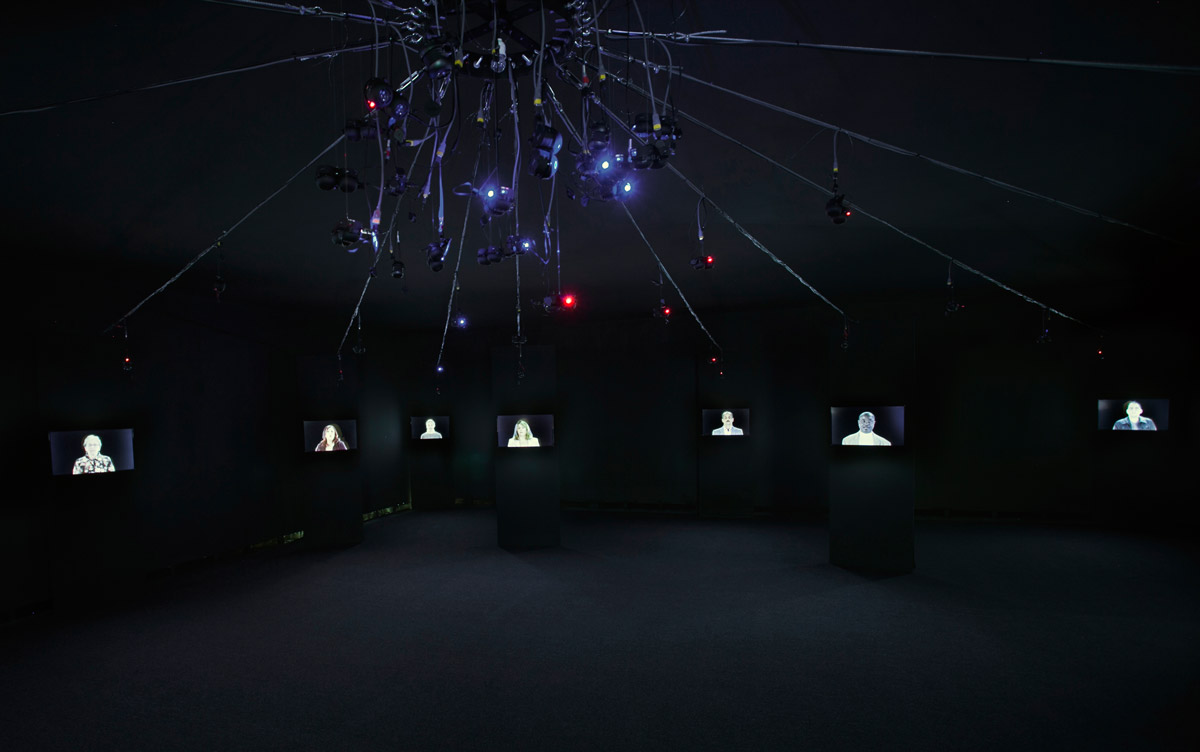
Joana Hadjithomas & Khalil Joreige, La rumeur du monde, 2014. Video installation , 23 screens, 100 speakers, 38 HD videos, varying durations. Courtesy: Galerie In Situ – fabienne leclerc, Paris
Scams use the promise of a big pay-off to play on our greed, our need to dream or to start a new life. But not only. These scams also reveal how those who take the bait are thinking in terms of charity, tinged by colonial sentiments: “This person is writing to me for help, they come from a country riddled with corruption and danger. I can make money while also doing something good.” There’s a sense of being chosen: “This person is writing to me personally, they picked only me. In their eyes I’m the only one they can trust.” The “victims” who reply are not necessarily naive. They are responding to the same need that makes us believe in fiction, in pictures, in theater, in cinema or in narrative forms generated by the Internet. These are “low-intensity belief systems”, to use an expression coined by Jacques Rancière. What is this strange faith that makes us believe in images and stories?
The Rumor of the World

Joana Hadjithomas & Khalil Joreige, Fidel, 2014. HD video, 11 min 48 sec. Courtesy: Galerie In Situ – fabienne leclerc, Paris
Is it possible to treat these emails, which are frequently the awkward results of automated translation software, as literary material? Can they be considered works of fiction or anecdotes, in the etymological sense of the word, that is “accounts unpublished”? We wanted to give these questions a body by asking thirty-eight non-professional actors from different backgrounds meet in Beirut to interpret a scam, to embody these fictions, to this imaginary world without images. Thus was born The Rumor of the World, a large-scale video and sound installation populated by faces and voices reciting the Scams to create a veritable rumor. As you get closer to a character, the cacophony dies down and only that one person can be heard. The messages, usually sent to hundreds of recipients, are now individually addressed. Like at the theater, the actor’s interpretation incites a kind of veracity, eliciting adherence. Their talk seems credible, up until money gets involved: the spectator suddenly remembers the border between truth and lies, fiction and documentary. These strange tales, connected through the installation, originating in different countries, passing from one history, one face or one voice to another, form what we call “The Rumor of the World”.
A scammer, for real
Amongst these non-professional actors, we made an incredible encounter: Fidel was able to recite his text in a particularly convincing manner, he seemed to already know by heart the Scam he was asked to memorize. This intrigued us. After talking with him for a while, he revealed that he had long been a scammer in Nigeria before giving it up to come to Beirut, where he worked as a sports coach and, in his spare time, as a stripper.
He accepted to explain the different tactics used by scammers to attract their victims: the way they talked, the accessories they used (a Rolex watch or Armani shoes, for example), the places they chose, everything staged and curiously similar to preparing a film shoot: « Scams are a kind of film you can’t really explain. It is a never-ending story. In these Scams, you will succeed in convincing a stranger, someone you’ve never met before, someone you will probably never meet again, to give you large sums of money. It is a magical film. » For us filmmakers, his descriptions made us reflect on our own working methods. Fidel inspired us a lot for other artworks but also personally, as the potential character for a new fiction film that we are currently writing.

Joana Hadjithomas & Khalil Joreige, (DE)SYNCHRONICITY, 2014. Video installation, 4 looped synchronized screens, 2 min 30 sec, Full HD. Courtesy: Galerie In Situ – fabienne leclerc, Paris
The victim
There are several characters in this story: the con artist, of course, the scammer, but off-screen there is the victim. It is impossible to ignore the victim, yet difficult to represent him or her. The victim generally prefers to remain anonymous, hidden. It is the veritable ghost that haunts our work. It is there, everywhere, yet unseen. It is one of thousands of people who fall in the trap, who lose a lot of money and feel humiliated. One could ask how it is possible to fall for these scams. We continuously ask ourselves how it is possible to fall for these scams. And yet, the victim is often a lot more like us than we think… Two years ago, by fate of circumstance, we came across one such victim in our own circle of friends. She didn’t want to hear it when we tried to warn her and kept saying, “No, in my case it’s different, it’s something else.” Just like with stories of love or addiction… she’s different. Like many Scam victims, she wants to believe she was chosen, picked by this stranger who wrote to her from afar because “she is the only remaining trustworthy person.”

Joana Hadjithomas & Khalil Joreige, It’s all Real, Omar et Younès, 2014. 2 vidéos HD synchronisées, 14 min 50 sec. Courtesy : Galerie In Situ – fabienne leclerc, Paris
The scambeaters

Joana Hadjithomas & Khalil Joreige, It’s all Real, Omar et Younès, 2014. 2 vidéos HD synchronisées, 14 min 50 sec. Courtesy : Galerie In Situ – fabienne leclerc, Paris
To take on these scammers, a group of individuals, mainly Americans, joined forces to fight the fraud. They call themselves scambaiters or scambeaters. These Internet users want to “scam the scammers.” They answer the emails, pretend to play the game to better bait the scammers. They draw out the exchanges to make the scammers lose time. Because when scammers lose time, they lose money: after the 4-1-9 law, passed in Nigeria, which severely punishes scamming, scammers have had to seek shelter in cybercafés to pursue their activities. Following the logic that losing time is losing money, the scambeaters and the scammers engage in a kind of role-play. The former push the latter to show proof of good faith. They ask the scammers to hand-write a text and scan it in, to send an audio recording of their voice, a photo or a video in which they appear wearing ridiculous disguises. Nobody knows if the scammer finds someone to stand-in for these extra requirements. In every case, the exchange is staged and this sometimes cruel game of back and forth blurs the lines of credulity and manipulation, establishing a relationship that inverses each person’s role.
The trophies
Scambeaters call the various elements they gather (video, photo, painting, sculpture, performance) “trophies” and exhibit them in The Trophies Room like a kind of strange, virtual museum. Because the scammer-scambeater correspondence often takes very long, a special relationship grows between the two. These exchanges are commented and shared by scambeaters, presented as both exploits and adventures, in an episodic story that develops at a breathless pace and with many unexpected turns. Our design for the installation The Trophies Room is a direct nod at architect Lina Bo Bardi’s design for the São Paulo Museum of Art’s exhibition Le Musée imaginaire by André Malraux in 1968. It addresses themes of art history, the statute of an artwork, its production, its visibility and its dissemination.
Cartographies
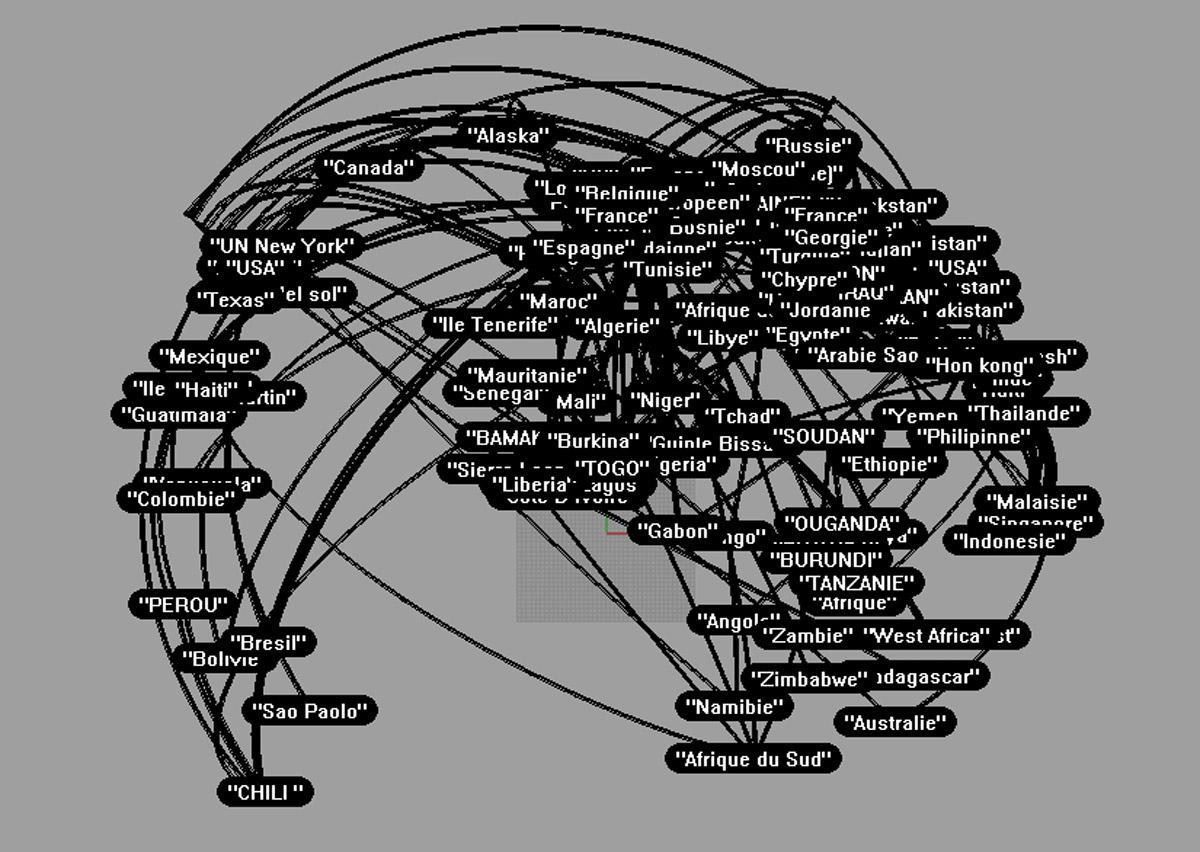
Joana Hadjithomas & Khalil Joreige, preparatory document for “La géométrie de l’espace” (“The geometry of space”), 2014. Courtesy: Galerie In Situ – fabienne leclerc, Paris
Scammers concerned with lending credibility to their stories will infuse their emails with details about conflicts, wars, displacements, global economic developments, fluctuations in financial markets, natural resources, religious extremism, political upheaval or ecological disaster. They anchor their stories in countries where corruption is plausible. They focus on Africa, Asia, Russia, the Arab world… The Scams thereby sketch a kind of topography of contemporary conflicts, wars, revolutions, symptoms of the world’s condition, and constitute another, parallel writing of the history of certain countries or regions.
They also draw a post-colonial geography, an imaginary universe of corruption and North-South relations as well as economic divides. We tried to illustrate this cartography of imaginary corruption through a series of sculptures and drawings depicting the circulation of email, with attention to the geographical distances covered by the scams. Places and countries represented in over two hundred emails, covering an entire year, are selected to identify pathways with coordinates (latitude and longitude) corresponding to various world events. The trajectories are materialized in steel rods that construct a globe, giving shape, a “physicality”, to a virtual network and to the chronology of events in one whole year of Scams. We studied three years that were particularly prolific for Internet scamming: 2005, 2008 and 2010. The trajectories, dated and positioned on the globe, are traced directly onto the exhibition walls and in chronological order. Alongside these sculptures, we also presented three “Scam Atlases” that covered the emails selected from those three years. These atlases retrace the conflicts, wars but also the climate catastrophes and economic fluctuations, not to mention the increasingly exacerbated relationships to communitarianism and religion.
It’s all real
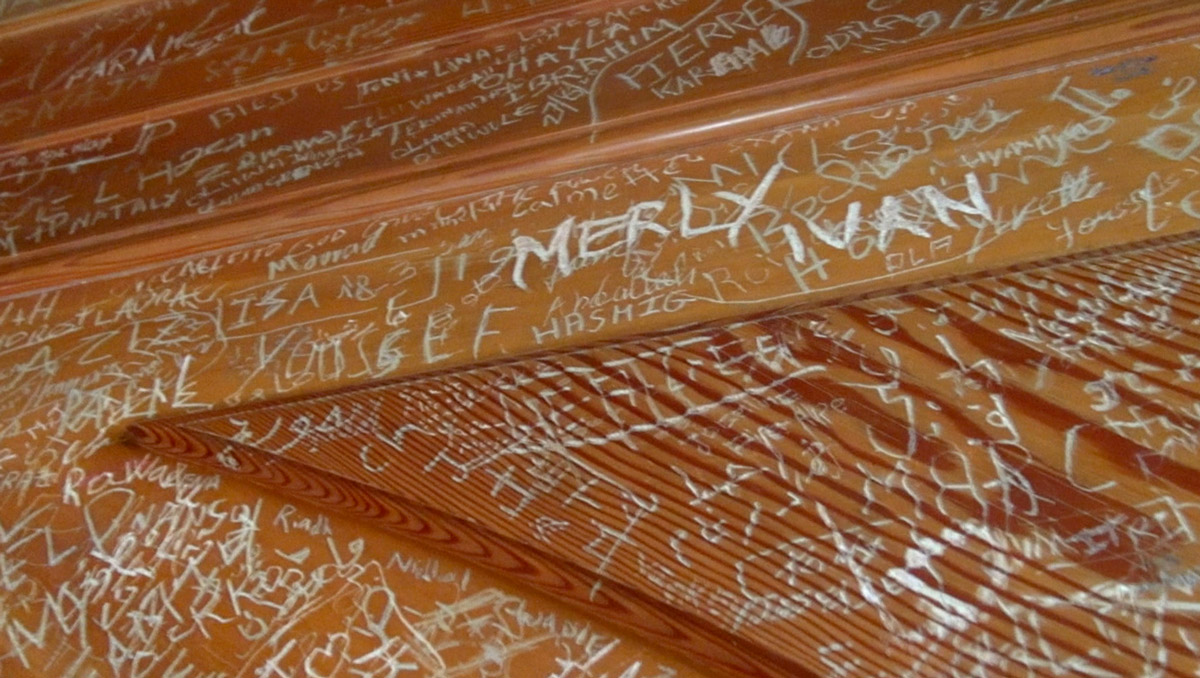
Joana Hadjithomas & Khalil Joreige, It’s all Real, Tamara, 2014. HD video, 8 min 47 sec, 2014. The monastery of Saint Charbel, HD video, 2 min 119 sec, Courtesy: Galerie In Situ – fabienne leclerc, Paris
While filming The Rumor of the World and meeting the different actors, all amateurs, we encountered some people with exceptional life stories. Aside from Fidel, nobody had been a scammer. For the most part they are emigrants of various nationalities, forced to leave their countries, temporarily exiled to Lebanon where they seek refuge while trying to build a better life. Some are factory workers, domestic help, others receive social aid. And some are even the children of these hard-working people, born in Lebanon and unable to obtain official papers, restricted in their movements. Their stories intersect with the tales invented by the scammers, with their own lot of events, conflicts and economic crises that spur migratory flux. In their own way, they reflect the Scam movement across the planet and undergo a never-ending identity shift, torn by several cultures, religions or temporalities. Each and every one of them is caught in an extraterritoriality that perfectly echoes the virtual, globalized world of the Internet. Omar and Younes, for example, are undocumented teenagers born in Lebanon to African fathers and Asian mothers. They dream of traveling and belong to a generation preoccupied with descent, transmission, origins, identity, position. The basketball court is their territory, and they meet there every day. Photos of their families are often the only trace left of their history, they show them images while talking about the past, projecting ahead, noticing the immobility of their mobility, their solitude, their hope but also their faith in the future.
Tamara, a young Iraqi doctor and a Christian, is forced to flee Baghdad and finds refuge in Lebanon. She is pulled further and further into her religion and her community. She now works in a “Christotherapeutic” center that provides health services to addicts through prayer and invoking Christ. Smiling to an almost disturbing degree, repeating that she is very happy, she refuses to call herself a victim, grounding herself firmly in her beliefs, displaying her faith as a new identity in face of the scientific method she once defended only a few years ago. She connects her fictitious presence in the exhibition to her present reality, affirming that life is like the movies, acting is living, having lived, having suffered. To act is not really acting.
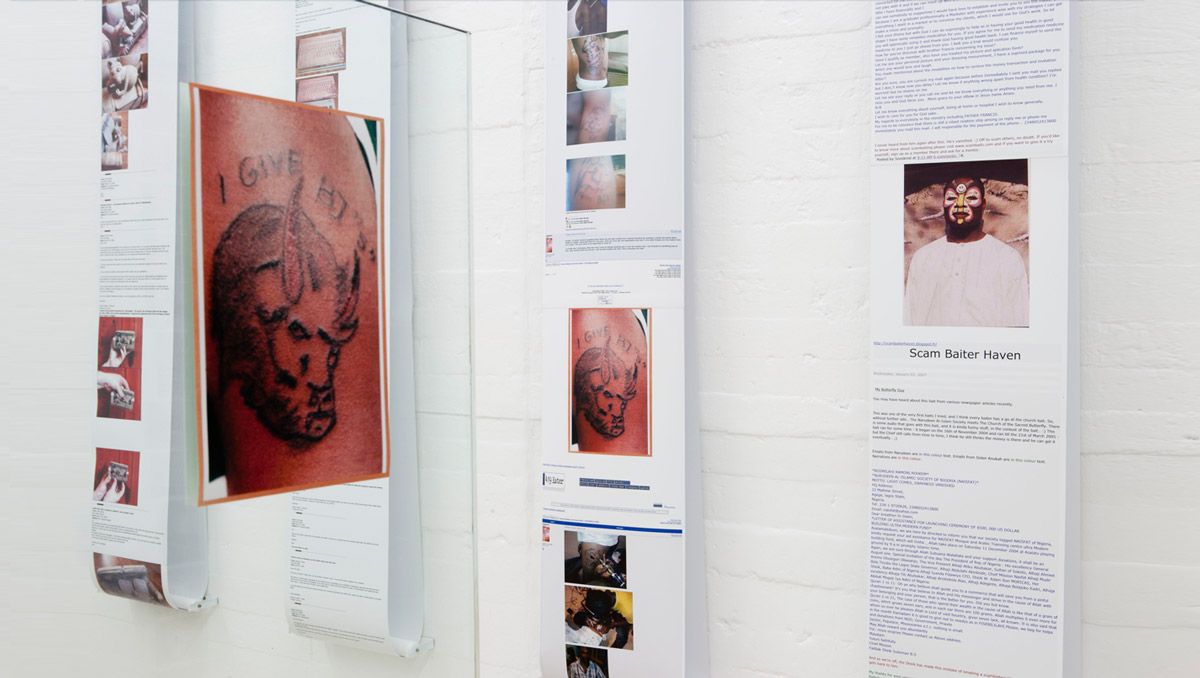
Joana Hadjithomas & Khalil Joreige, La Chambre des Trophées, 2014. Concrete, glass and photographs. Laminated photographic prints on rolls. Variable dimensions. Courtesy: Galerie In Situ – fabienne leclerc, Paris
Adib, Syrian, having recently fled his country, is a refugee in Lebanon like more than one and a half million other compatriots. He has no role to play, nothing to say. Staring helplessly at us, mute in front of the camera, his story speaks loud and clear through his eyes alone. Born to a Russian mother and a Nigerian father, Sasha has lived in Lebanon since childhood, torn by the diversity of her origins. She is a dancer and expresses her identity split through a strange choreography. Contorted, restless, dismembered, moving with extreme agility, trying to reassemble her parts into a whole. Like the cycle of life, made of falls and new beginnings, she stumbles, she stands up again, she disperses and then finds the strength to pull herself together again…
Translation by Maya Dalinsky
Cover image: Joana Hadjithomas & Khalil Joreige, Sasha, 2014. Video installation, 2 HD synchronized projections, 4 min 23 sec. Edition of 6 + 2 AP. Courtesy: Galerie In Situ-fabienne leclerc, Paris
